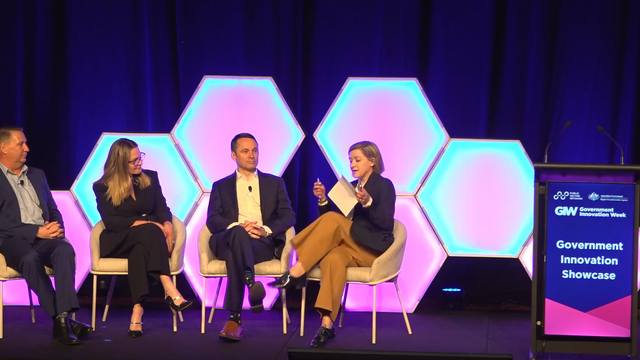Enabling Operational Objectives with a Proactive, Diverse and Resilient Approach to Procurement
Procurement Innovation Spotlight: Taking a Proactive Approach to Supplier Diversity

Parker Brigg
Assistant Commissioner, Strategic Procurement,
Australian Taxation Office
At the recent Procurement Transformation virtual event, we heard from Parker Brigg, Assistant Commissioner, Strategic Procurement, Australian Taxation Office as he dived into how to take a proactive approach to supplier diversity. In this article he explores:
- Understanding the importance and opportunities behind supplier diversity
- Establishing a sustainable supplier diversity program that broadens access to the best suppliers
A journey towards procurement diversity
Procurement is essentially about buying in bulk, and for large public sector organisations, procurement often forms a big part of their operations and their budgets. Procurement often has many regulations and standards associated with it, and as such, there is seemingly often not a lot of room for diversity within the profession. However, this is not the case at the Australian Taxation Office (ATO). Parker Brigg , the Assistant Commissioner for Strategic Procurement at the ATO, the one who is essentially the head of procurement for the whole organisation, says that their procurement pathway has “changed over the last six years.”
That change came about because the ATO, “like all Commonwealth agencies,” struggled to meet some of their Indigenous Procurement Policy (IPP) targets [1] . With 21,000 staff and an annual budget “a little under $4 billion,” meeting those targets was not always a priority, especially because the ATO is the national organisation that “administers the tax and super systems in Australia.” To do this, they “manage over $11 billion of value across 1,900 contracts, and enter into about 500 new contracts every year.” The model for this includes a “centralised procurement team of around 55 people” who work with the “business line stakeholders.” Overall, contract management is performed by over 200 staff members, some of whom are part of the “significant contractor workforce.”
The challenge to meet those targets “has evolved over time” and through that, the ATO realised that “the commitment to supplier diversity is in our organisational DNA. The ATO has a long heritage in supporting and engaging with small businesses, so supply diversity and Indigenous procurement fit very well within our organisational mission.” Six years ago, the senior leadership of the organisation recognised the need to embed that diversity, and in that time, the ATO has gone from “a very negligible spend of less than $10,000, to more than 500 contracts with Indigenous businesses worth more than $100 million.” Since 2015 therefore, “the ATO has exceeded all of its targets” and has even won a number of industry awards in the process, particularly the Supply Nation Award in 2016.
[1]
https://www.niaa.gov.au/indigenous-affairs/economic-development/indigenous-procurement-policy-ipp
The supplier diversity program and its impacts
Since the creation of the supplier diversity policy in 2015, the challenges and opportunities have changed. Initially, they began by “pursuing low-hanging fruits” like updating policies and procedures. “But now it’s quite different. We need to expand into some new areas of potential opportunity.” Now it is about deeply engaging with Indigenous businesses. To do this, the ATO has identified “three core guiding principles:”
- Dedicate resources – “We’ve got an agile team that is responsible for driving commitment to supplier diversity.” They are solely dedicated and do not have another distracting focus. “That’s been really key in gaining traction.”
- Pursue best-practice – “We’ve established many wide-ranging relationships with other agencies to help us identify new opportunities to engage with Indigenous businesses.”
- Set tangible, measurable goals – “We develop an annual supply diversity plan where we outline the opportunities, activities and projects we will pursue. This really helps ensure transparency and accountability.”
Each of these three principles is linked to four areas of an overriding methodology, which are about “connecting, sharing, learning and promoting, and improving.” They are all designed to build relationships, capabilities and awareness. For example, one of the flagship activities of the policy and program has been the “Indigenous supplier showcase videos,” where Indigenous suppliers were asked “how working the ATO has impacted their business.” The suppliers were then filmed by professional video crews at their locations, and were able to “provide some very interesting stories and insights.” Some said that working with the ATO gave them “knowledge and confidence, and allowed them to be competitive.” Another said that their largest contract was with the ATO, which then provided them an opportunity to “grow and expand, and hire new Indigenous workers.”
Another activity is “what we call our annual Supply Diversity September,” which is usually a series of face-to-face events, but last year was “a digital expo that included a range of information and events,” like panels and speakers. It was able to reach a greater number of people than normal by being online. Other activities include partnerships, Indigenous-only events, and networking events.
Doing all of these activities and having a policy and a program in place is good for business. As mentioned, there has been a significant increase in contracts, plus in 2020/21 “we tripled our Indigenous procurement policy target, exceeding it by 200%, from a goal of $12.8 million to actual figures of $39.4 million.” In the six years of operation of this program, “we’ve engaged with over 30 different agencies,” from governments all around the country, to Indigenous and other businesses as well.



































